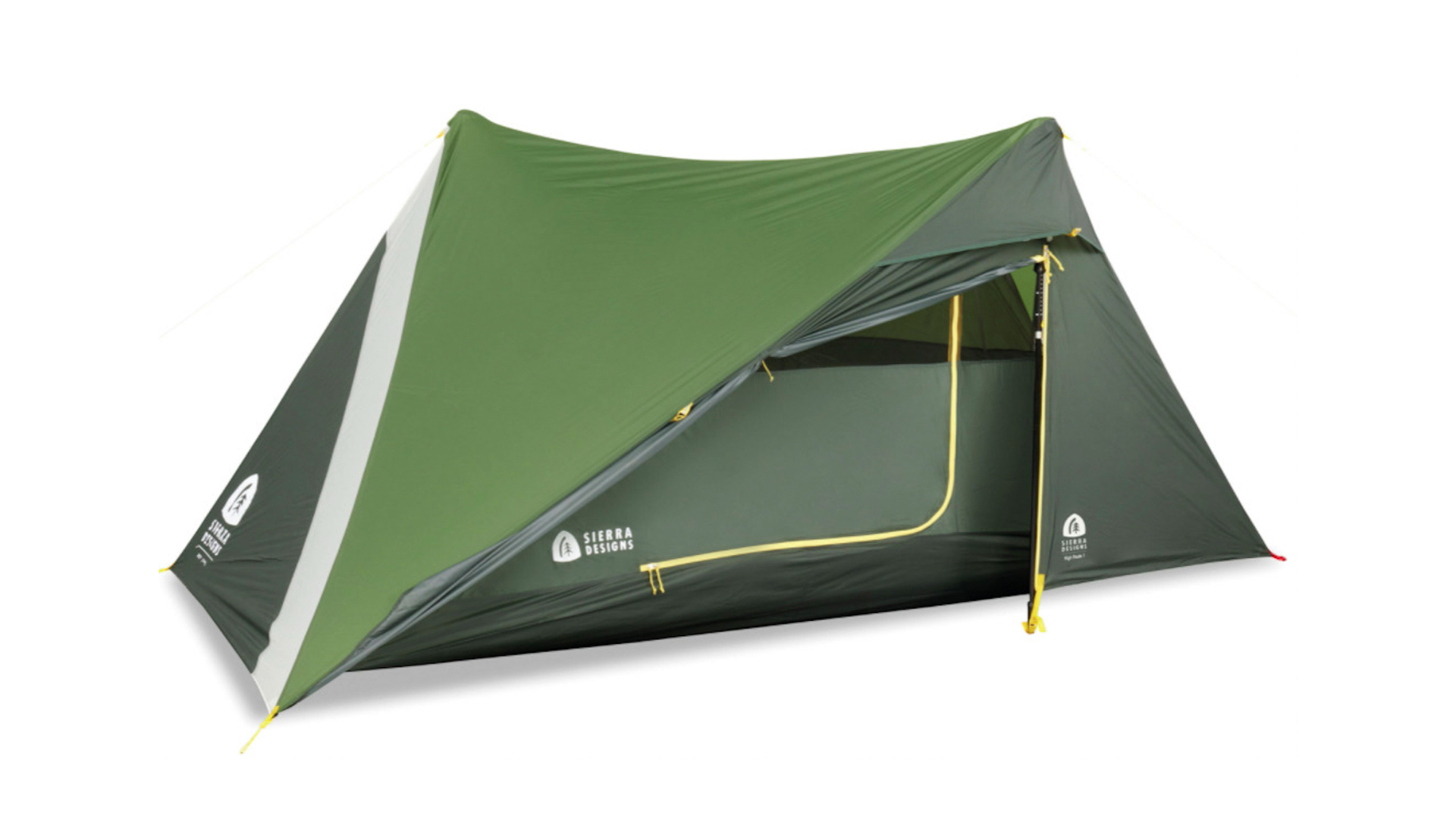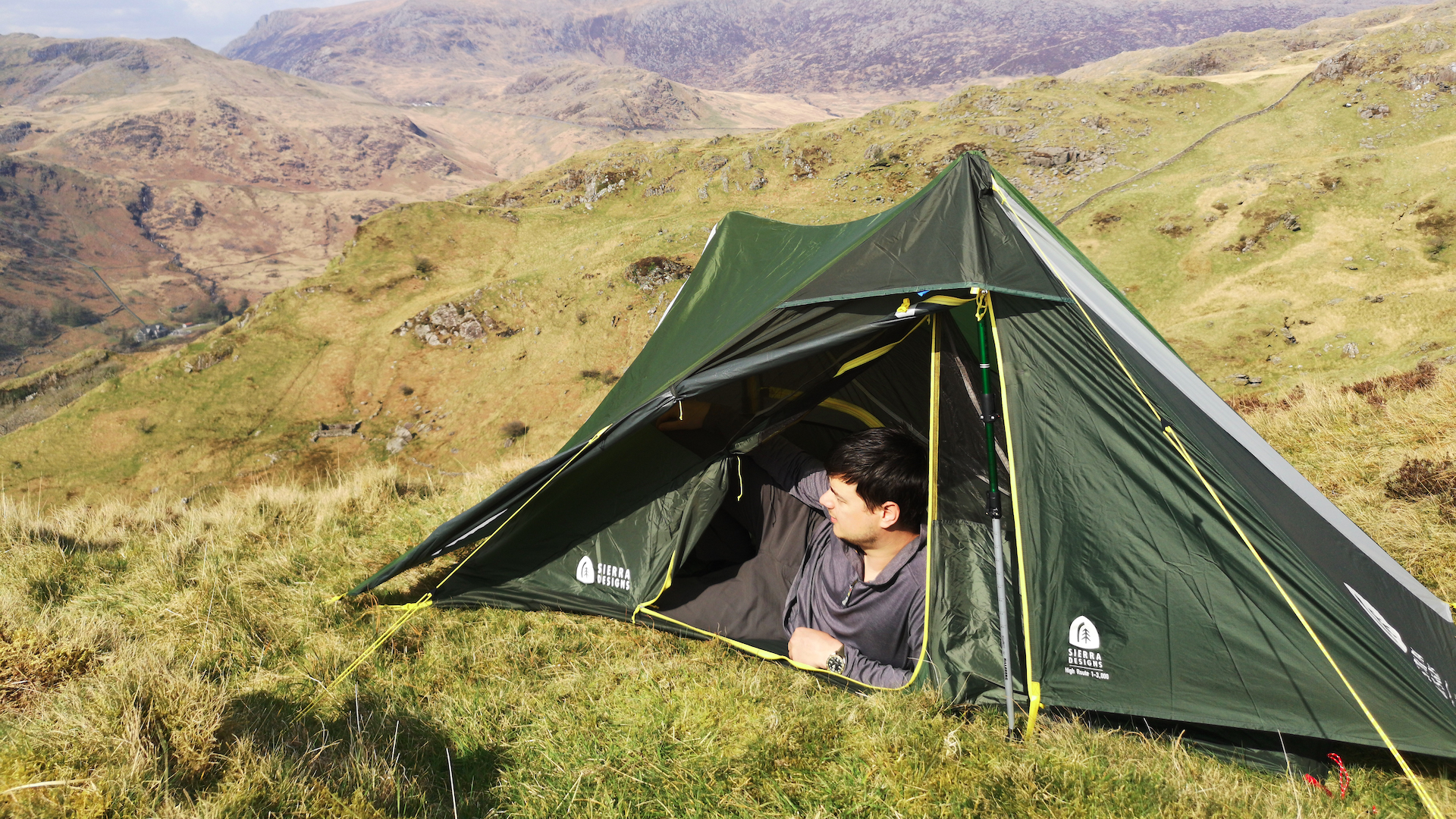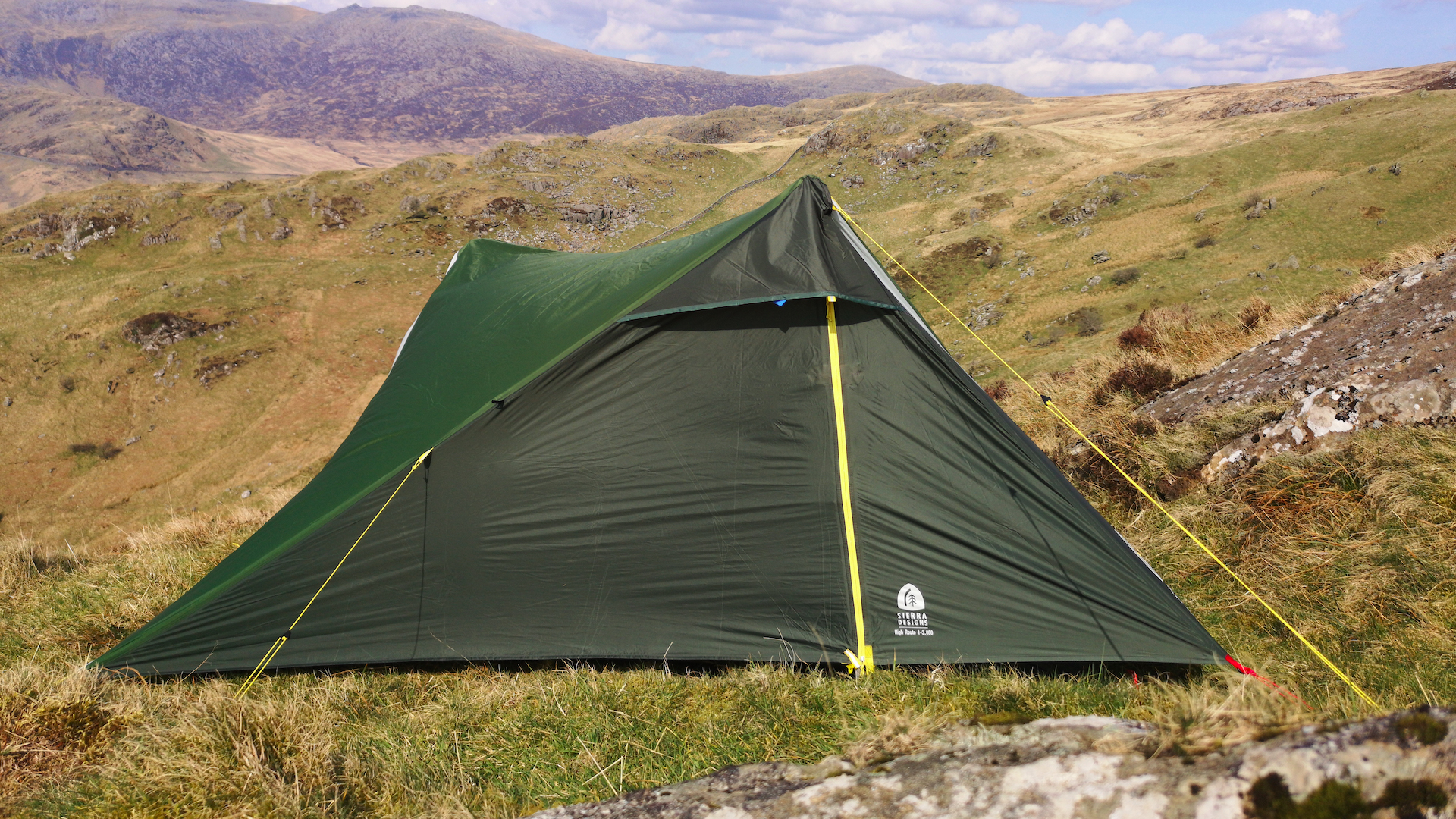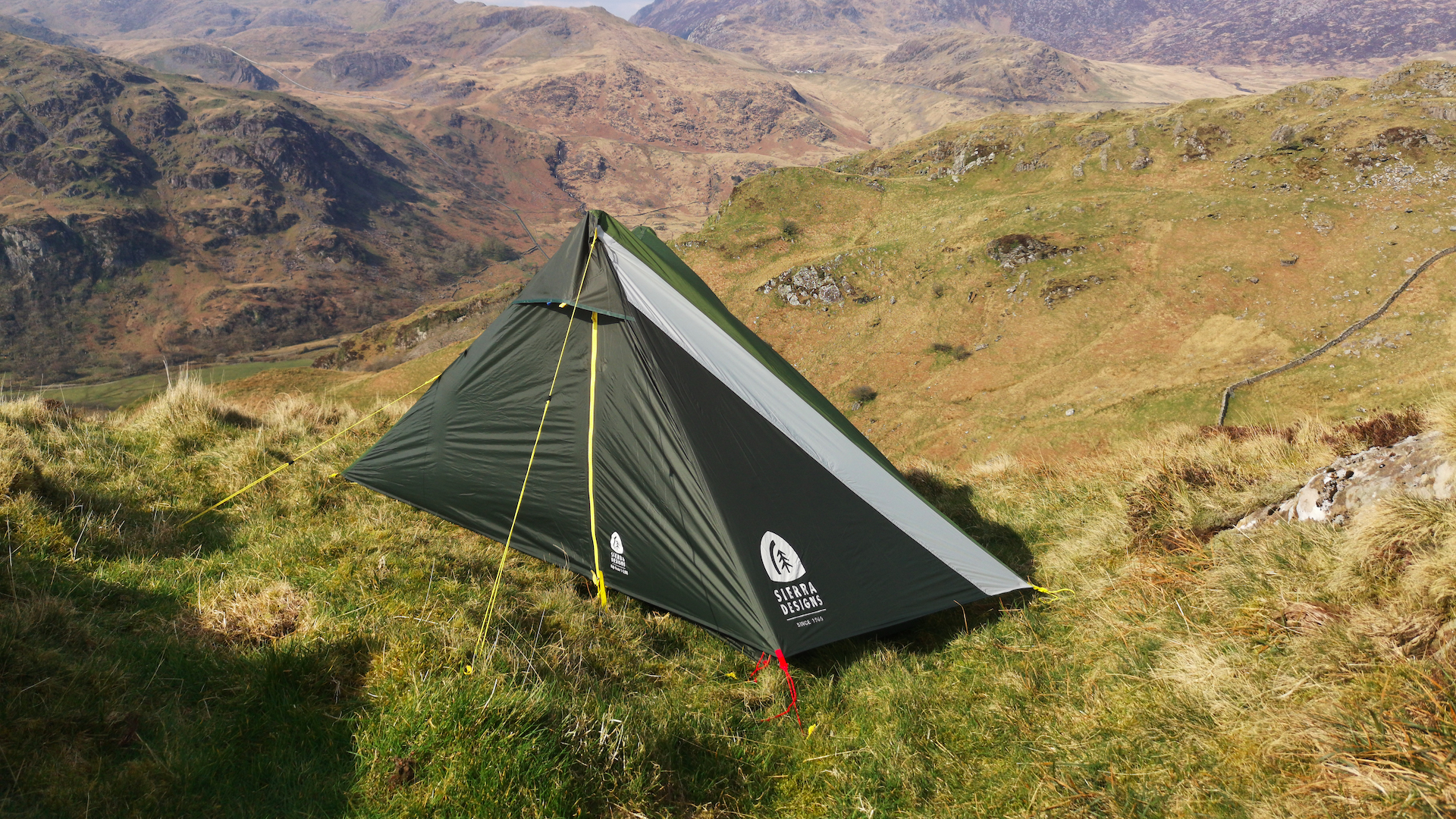Advnture Verdict
Though this unusual trekking pole tent is a bit trickier to pitch than some, the offset design makes for a light and packable shelter that is very airy, spacious and practical for life on the trail.
Pros
- +
Good internal length and headroom
- +
Useful porch areas
- +
Can be pitched inner first, all-in-one or outer first
- +
Lightweight and compact packed size
Cons
- -
Needs careful pitching
- -
Inner is not the widest
You can trust Advnture
Sierra Designs High Route 3000 1P: first impressions

The Sierra Designs High Route 3000 1P is certainly a different beast to the other tents in our best one-person tent buying guide. It has an unusual double-walled design and lacks conventional poles, instead requiring a pair of trekking poles, placed at opposite corners, to form the structure. This asymmetric offset configuration is a bit ungainly looking but very innovative, giving the user significantly more interior headroom than most trekking pole tents (see also: types of tent).
The concept was developed by Sierra Designs in collaboration with backpacker Andrew Skurka, who was also responsible for the design of their best-selling Flex Capacitor rucksacks as well as the Sierra Designs Flex Capacitor 40–60 sleeping bag.
The High Route 3000 is an evolution of the original High Route, with slightly heavier but also more weatherproof fabrics, featuring an upgraded waterproof rating of 3,000mm Hydrostatic Head – hence the name.

It also now comes in a muted dark green rather than the original blue and yellow colorway, making it a far better choice for stealthy wild camps. There’s also more fabric and less mesh in the inner, to add warmth and reduce draughts.
All of these changes are designed to appeal to the UK and European markets – US consumers might want to consider the standard High Route instead. But for Brits in particular it is a practical and versatile shelter, since you can pitch it outer first, all-in-one or just use the inner as a bug shelter (though you need to decide which it’s going be before you do so, as pitching it inner-only requires a slightly different setup). This gives you plenty of options regardless of prevailing weather conditions.
Inside, there is plenty of room to stretch out and sit upright, though the inner isn’t the widest we’ve tested. On the other hand, you get two useful porch areas and one-and-a-half doors – the first has a full-length zip for easy entry and exit, while the other has a half zip that gives access to a smaller vestibule area. Sierra Designs calls this a “gear garage”, and it is certainly a useful space to stash rucksacks, cooking gear or muddy hiking boots.
• RRP: £300 (UK)
• Sleeps: 1
• Weight: 1.08kg / 3lb 7oz
• Pack size: 40cm x 16cm / 16in x 6.5in
• Length: 259cm / 102in
• Compatibility: Three-season backpacking
Sierra Designs High Route 3000 1P: in the field
When packed in its compression stuff sack, the Sierra Designs High Route 3000 1P is nice and compact as well as being lightweight. It’s an attractive option if you’re packing for a solo multi-day adventure and are looking for a suitable shelter – just remember to take those trekking poles with you (see also: Ultralight camping: 12 ways to lighten your load).
All the latest inspiration, tips and guides to help you plan your next Advnture!
We have to say that although we’ve pitched hundreds of tents over the course of our gear-testing career, this one proved a bit of a head-scratcher on initial setup! That’ll teach us not to read the instructions…
Still, after we’d pitched it a few times it became much more familiar, and we grew to appreciate the ingenuity of the design, despite its somewhat strange looks. We’d still say that it’s well worth practicing setting it up before you head for the hills. Secure peg placements are also vital to ensure a taut pitch, so look for solid ground when selecting a campsite. When properly anchored it is a very stable design, though.

Camping in the Sierra Designs High Route 3000 1P proved to be airy, pleasant and plenty roomy, even for a six footer. The inner features one small, mesh storage pocket, plus hanging tabs for a gear line or tent lantern. Two porches provide just enough space to stash gear, with a full-size zippered door as the main entrance that makes getting in and of the tent easy. That half-length zippered door on the other side of the tent is also a handy feature.
We also liked the strutted vent at the top of the main door, which noticeably improves airflow and reduces moisture buildup, aided by the large gap between the flysheet and inner. Condensation wasn’t an issue on test. All in all, we were impressed with its performance.
An outdoors writer and editor, Matt Jones has been testing kit in the field for nearly a decade. Having worked for both the Ramblers and the Scouts, he knows one or two things about walking and camping, and loves all things adventure, particularly long-distance backpacking, wild camping and climbing mountains – especially in Wales. He’s based in Snowdonia and last year thru-hiked the Cambrian Way, which runs for 298 miles from Cardiff to Conwy, with a total ascent of 73,700 feet – that’s nearly 2½ times the height of Everest. Follow Matt on Instagram and Twitter.


